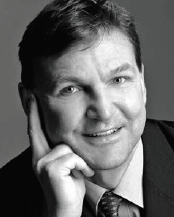Who Rules Iran? The Structure of Power in the Islamic Republic.
Washington Institute for Near East Policy and Konrad-Adenauer-Foundation
Washington D.C.,USA 2000
239 pages, 1 map, 19 diagrams
ISBN 0-944029-39-6
$ 29.95
to be ordered by Amazon
Irans Hybrid-Regime gibt bis heute Rätsel auf. Wer regiert die Islamische Republik Iran? Ist sie eine Republik, bestimmt durch einen vom Volk gewählten Präsidenten? Oder ist sie eine schiitische Theokratie, bestimmt durch einen Revolutionsführer, der sich durch theologische Konzepte und Revolutionsdogmen legitimiert? Wer ist ein Reformer? Wer ist ein konservativer Hardliner? Und was bedeuten diese Termini überhaupt? Wie relevant sind solche Konzepte in einem politischen System mit zahlreichen, einander oft überlappenden und stets miteinander konkurrierenden Machtzentren? Und welche Machtzentren sind mächtiger? Diejenigen, die dem nationalen Interesse Irans als Staat förderlich sind, oder diejenigen, die nur der Revolution dienen? Wer auf diese und viele weitere Fragen klare und verständliche Antworten sucht, sollte zu diesem Buch aus der Feder von Wilfried Buchta, einem international anerkannten Iran-Experten, greifen.
Neuer Text
Foreign Affairs
Who Rules Iran? The Structure of Power in the Islamic Republic
By Wilfried Buchta
Reviewed By L. Carl Brown, Princeton University
"An invaluable book for anyone who wants to know who's who in Islamic Iran, sort out the various governing institutions, look up Iranian election results, learn about the various opposition groups inside Iran and beyond, and more. At the same time, the book is more than just a handy reference tool. It is also a very readable study of modern Iran that assesses "Iran's maze of power centers," the Iranian opposition, and finally the ongoing power struggle from 1997 to 2000 between moderates and fundamentalists. Buchta is especially good when presenting the many vested interests intent on stifling liberalization efforts. These include the paramilitary Basij, the Revolutionary Guard, and the many foundations (bonyads) that operate as autonomous sources of patronage by dispensing economic fiefdoms that lie beyond governmental control. The author's sobering analysis suggests that President Mohammad Khatami and a majority in the Majlis (parliament) may not prevail. Referring to Islamic Iran's first president-who was ousted and forced to flee the country in 1981 -- the conclusion asks, "Is Bani-Sadr's past Khatami's future?"
Who Rules Iran? The Structure of Power in the Islamic Republic
By Wilfried Buchta
"Perhaps the only book that effectively explains how Iran’s political system works. While it needs an update, it’s an essential guidebook for those interested in how power is brokered in the Islamic Republic."
Thomas Erdbrink, Tehran bureau chief for The New York Times, in:
Atlantic Council, 21. 09. 2018
https://www.atlanticcouncil.org/blogs/iransource/the-books-the-trump-administration-should-read-to-understand-iran/



